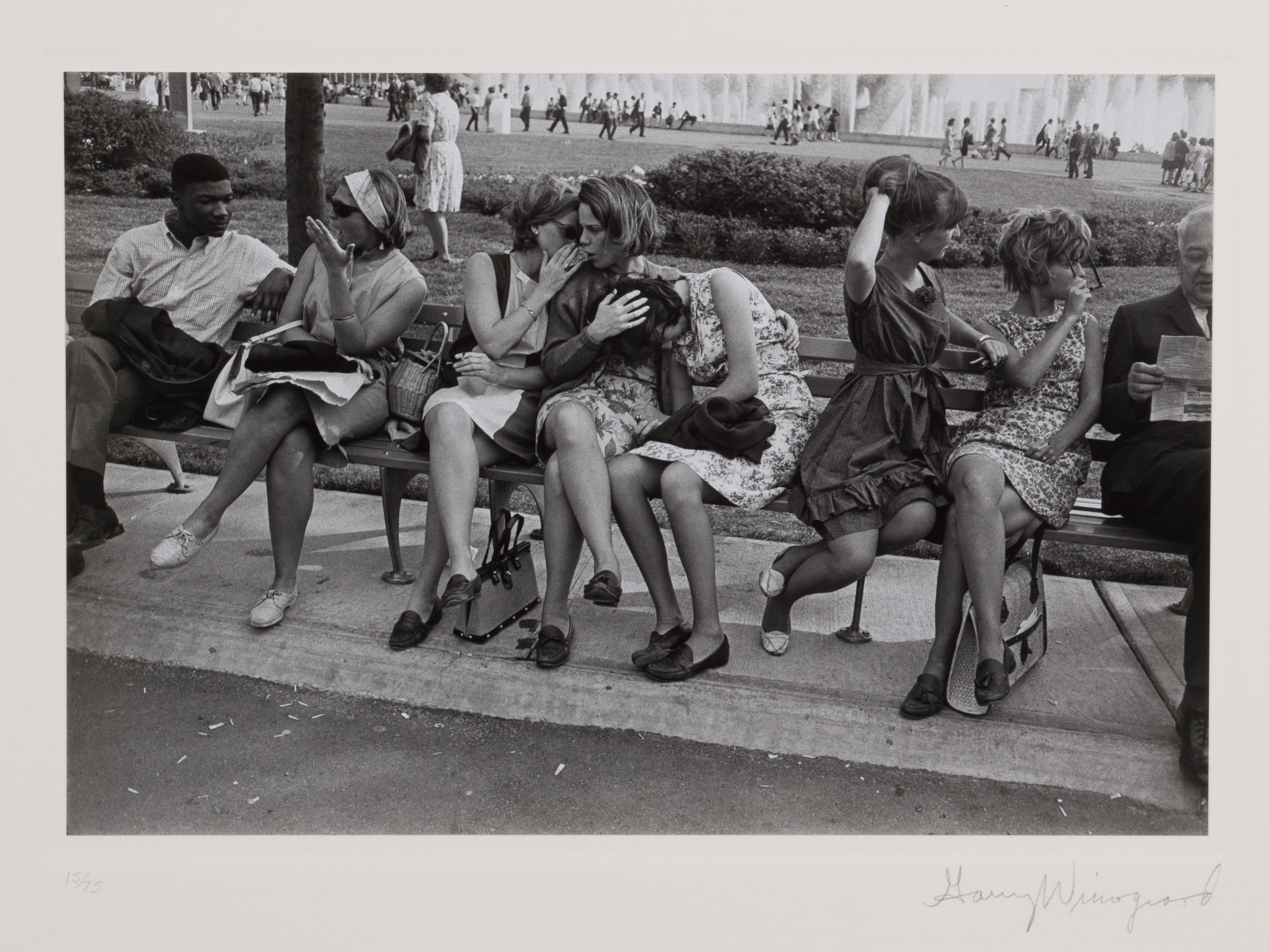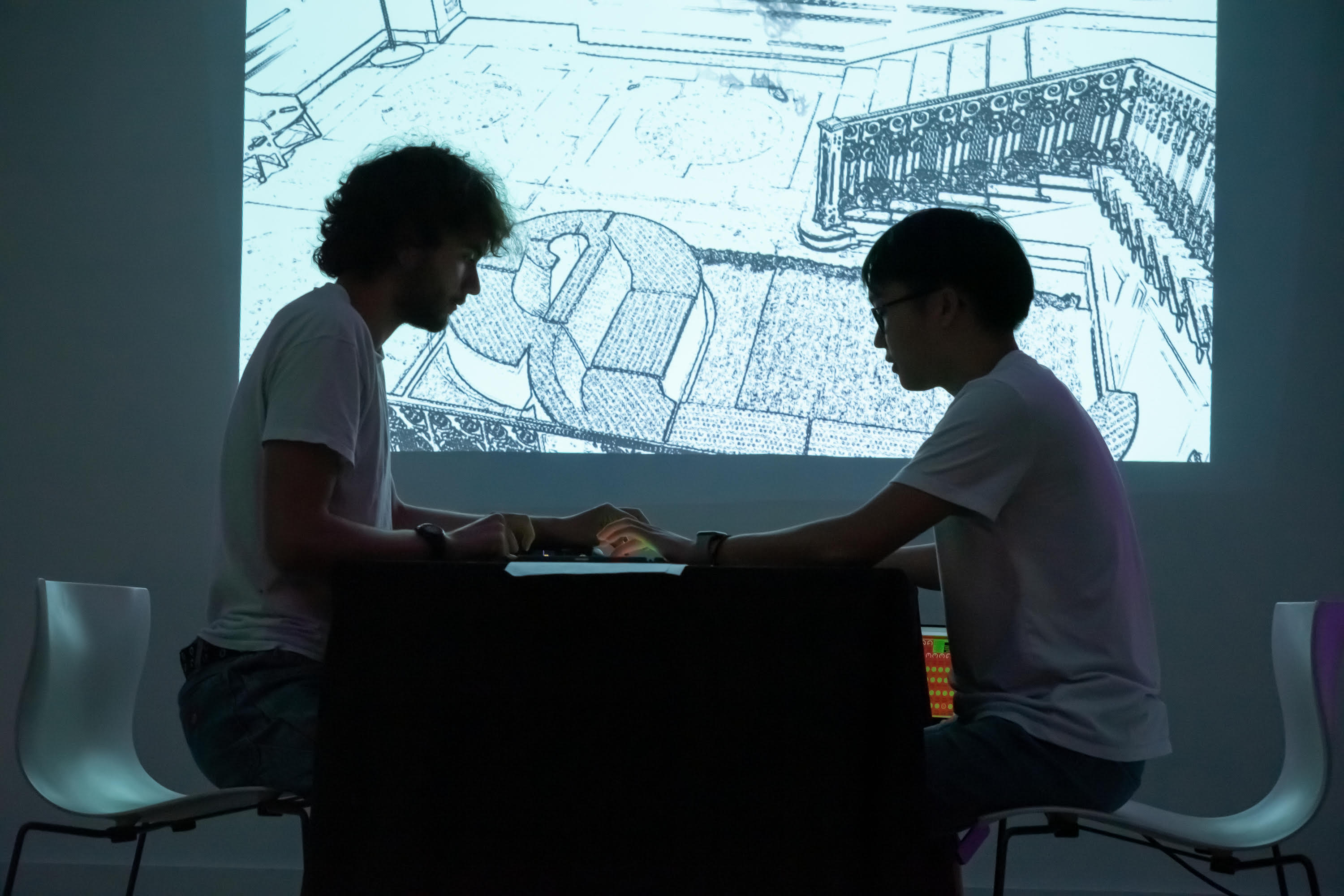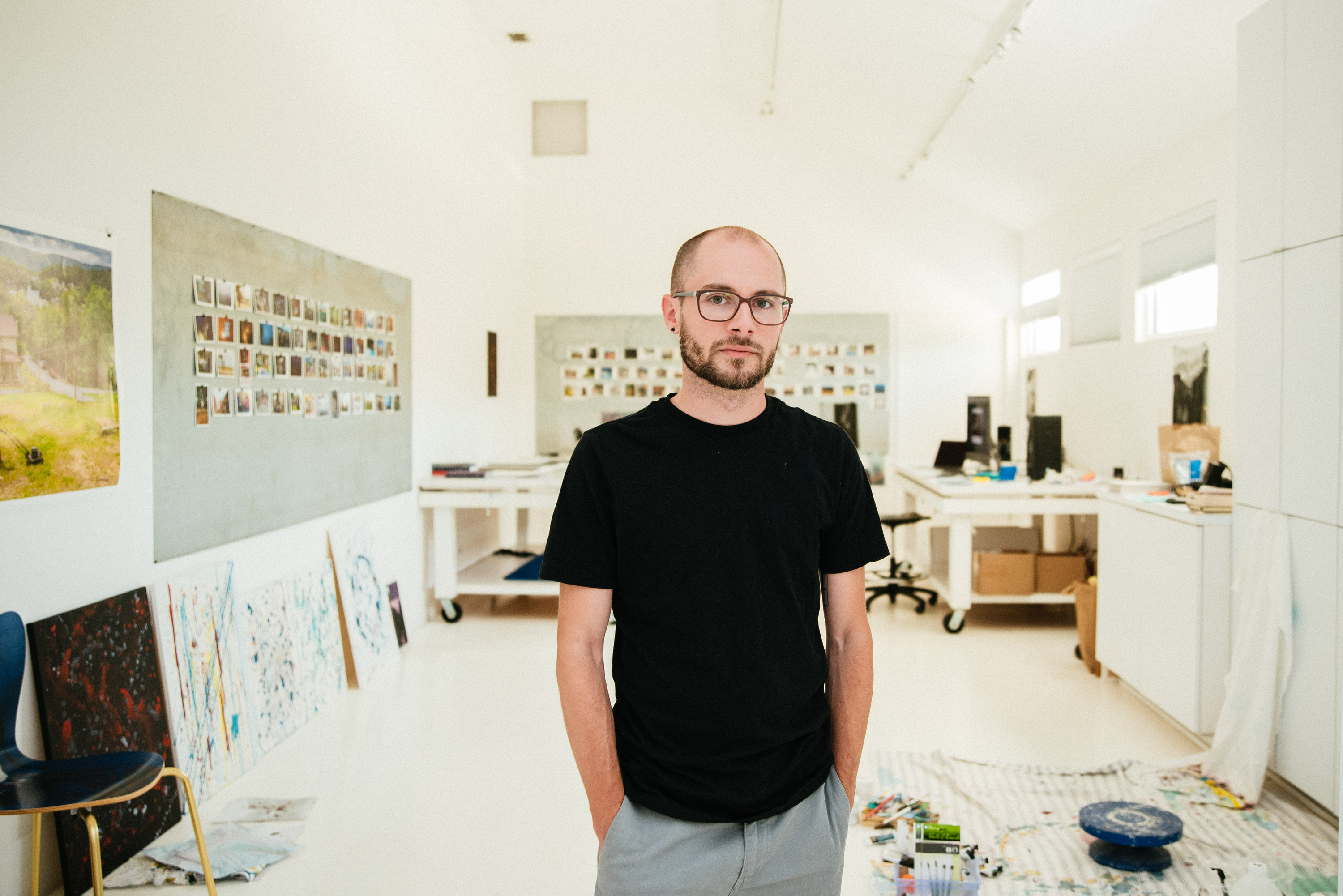Faculty members from across all programs at the Corcoran School of the Arts and Design have chosen works for inclusion in an exhibit that will be on display until the end of the current semester. The show includes a variety of artworks from the GW Collection and is open Wednesday through Saturday afternoons from 1–5 p.m. in Gallery 6 of the Luther W. Brady Art Gallery in the Flagg Building.
GW has been collecting art since 1821 and the collection now contains more than 3,800 works of art, including paintings, sculptures, graphics, textiles, ceramics, historic furnishings and photographs. The 10 works selected by faculty are shown here, along with comments by the selecting faculty member(s), including Lauren Onkey, Anna Kimmel, Marc Choi, Douglas Crawford, Andrea Dietz, Michele Carlson, Aasawari Kulkarni, Matt Eich, Schillica Howard, Susan Sterner and Caroline Woolard.
The show is a collaboration between the gallery and the Corcoran School, conceived and organized by Babette Pendleton, exhibition and programming associate for the Corcoran, and Olivia Kohler-Maga, assistant director of the gallery.
“World Fair—New York City, New York, 1964” by Garry Winogrand (above), was selected by Matt Eich, assistant professor of photojournalism: “This image by Garry Winogrand has lived rent-free in my head for many years and is one that I frequently share with students who are trying to understand how to create a dynamic photograph that keeps the eye dancing. The frame is a compositional tightrope with neatly separated portions of the scene that would have collapsed into chaos a split second before or after the shutter was released. I am drawn to this image not because it answers questions, but because it poses them through a series of ambiguous interactions. There are three distinct moments unfolding on the same bench simultaneously—each would have made for an interesting image, but the combination of the three moments creates a crescendo.”
“Every artwork is more than an image or an object; it is a manifestation of relationships, values and forms of power. I selected these two objects—a trowel made to celebrate this building alongside an anti-slavery broadside—to ask: How might we understand modern art in America alongside a project of whiteness and property relations? As Dr. Vanessa Andreotti asks: 'How can education become a space for conversation where, together with our students, we can examine our desires for progress, innocence and futurity and our cravings for certainty, comfort and control? How can we secure spaces for grown-up conversations in global citizenship education beyond fears of confronting (white) privilege and exceptionalism or the wish for a quick exit/redemption from implication in harm?’”
—Caroline Woolard, W.W. Corcoran Visiting Professor of Community Engagement
“This portrait of singer, musician, composer and storyteller Libba (Elizabeth) Cotton (1892-1987) radiates the joy and history embedded in her music. It was featured in Brian Lanker’s 1989 book, and the Corcoran Gallery exhibition of the same name, 'I Dream a World: Portraits of Black Women Who Changed America.' It’s an honor to have her portrait back on the walls.”
—Lauren Onkey, director of the Corcoran School of the Arts and Design and professor of music
“Petals spill over the edge of a basket, their collective silhouette forming a tutu for this young street merchant. His gaze is clear and posture regal, yet the shadow from the baby’s breath holds the most detail. Today in N.Y.C., migrant workers set up shop along Sunset Park’s Fifth Avenue, some selling the same delicate flower. Recently in D.C., I ran along the Mall and watched a vendor be stopped and asked to show license and registration. May we all find a corner where we can bloom, a corner where we can dance.”
—Anna Jayne Kimmel, assistant professor of dance
“As a graphic designer, I naturally gravitate towards work that embodies language and storytelling through a combination of text and image. Vida Freeman’s piece, 'Tule Springs,' is originally part of a portfolio of 10 palladium prints (and rock samples!) called Death Valley Series. The work in the series pairs Freeman’s photographs of Death Valley sites with historical narratives of, as she describes, “human drama” that occurred within the same landscape. The combination of representations encourages viewers to acknowledge and imagine the histories and ghosts of the past that quietly (if not assertively) occupy our natural and built surroundings.”
—Marc Choi, assistant professor, graphic design
“Generative artificial intelligence has gained recent infamy for constructing elaborate and often implausible architectural environments. In light of the criticism of architectural surrealist outcomes from AI, it is important to recognize the long tradition of capriccio architectural representations made famous, in part, during the eighteenth century by Piranesi and later by artists such as M.C. Escher.”
—Douglas Crawford, assistant professor of interior architecture, M.A. graduate advisor
ALSO:
“Piranesi’s etchings are the exemplification of ‘paper architecture’—of representation not as an intermediary for a world beyond, but as a world in and of itself. They are marvels of composition, of craft, of reflection, of criticism and of speculation; they collapse into two dimensions all of architecture’s powers. 'Prisoners on a Projecting Platform,' a fantastical reassembly of ancient forms that both challenge social constructs and project other possibilities, captures the full range.”
—Andrea Dietz, assistant professor & director of graduate studies for the master of arts in exhibition design
“I have a deep appreciation for Anne Truitt’s sculptures and works on paper. She deploys the methodology of minimalism using techniques of reductive abstraction and geometric fields of color, but her works have always felt active and complex in their sparsity. Her visual work, when paired with her writings—a lifetime of her published journals—show her as someone who believed that her artistic work came from life, in all its mundanity and basic annoyances and joy. This idea of artistic wholeness is not lost on me as I scrolled through several thousand images within the GW Collection; most of the artworks in the collection are made by artists somewhere at the intersection of white, male, and Western. There were many artists I would have loved to see pulled from the collection, those who had a notable impact on my studies as a developing artist and young printmaker, such as William Hogarth, Leonard Baskin, Marc Chagall, Andy Warhol, Francisco de Goya and Giovanni Battista Piranesi, to name a few. But when thinking about Anne Truitt’s wholeness, “28 Aug ‘85,” best asks the questions I often consider when attending collections. What is present, and what is not? If something is privileged, then what is this privilege rendering unseen? How do we construct a sense of wholeness when something is arrested in time? And who benefits if we don’t?”
—Michele Carlson, associate professor, printmaking
“Overlapping textures with soft contrast come together in this familiar form of a curious found object. Objects, against the world as a background, camouflage through time and familiarity, and the more you continue looking at this collage, the more you find an object. I enjoy the open-ended perception of familiar tactility, and I selected this montage for its open-ended familiarity. The tactility invites viewers to use their curious imagination to invent forms around them, viewing objects as pieced-together textures (much like inventing forms in clouds). How does an artist’s tangible perception differ from the viewer’s constructed perception? I hope the process of ‘looking’ turns into an imaginative engagement with objects around you.”
—Aasawari Kulkarni, assistant professor & undergraduate advisor of graphic design
“I selected Louis Stettner’s 1953 photograph, 'Young Girl, Penn Station, N.Y.C.,' because the image of a smartly dressed young Black girl marching through Penn Station, seemingly alone, intrigued me. Considering the fact that New York City was hailed as the Jim Crow capital of the North when this photograph was taken, I wonder where she is traveling, why she is alone, and the feelings that this walk, and probably solo train ride, evoke in her. Stettner loved the drama of Penn Station and perfectly captured a quiet, yet captivating moment in a young girl’s day, inviting viewers to reflect on both the girl’s journey and the broader context of daily life for a child experiencing but not subjugated by oppression.”
—Schillica Howard, assistant professor of museum studies (collections management)
“This image by combat photographer Dickey Chapelle jumped out to me for its horrific beauty. I am drawn to the structure of the frame. The compression of the barbed wire and flames, in combination with the slow exposure, traps the three figures in an impossible and overwhelming experience of battle. Chapelle’s work also speaks to me as a woman in photojournalism. As I was learning how to be both myself and a photojournalist, I sought out examples of women who made a mark in a male-dominated industry. Dickey Chappelle’s career and work inspired me. It’s impossible to represent the human condition and our shared experiences without a diverse and inclusive range of visual storytellers.”
—Susan Sterner, associate professor of photojournalism & photography, director of the Master of Arts in New Media Photojournalism Program





![Melville Chater Artist Palm Press, Inc. Printer [“Faces and Flowers Below the Tropics,” Durban, South Africa], 1930 Melville Chater Artist Palm Press, Inc. Printer [“Faces and Flowers Below the Tropics,” Durban, South Africa], 1930](/sites/g/files/zaxdzs5401/files/styles/de2e/public/2023-10/cga_1990_2_38flowervendor.jpg?itok=0vXyHdNn)





![Dickey Chapelle, Artist Palm Press, Inc., Printer [South Vietnam], 1964 Dye Imbibition Print (dye transfer) Dickey Chapelle, Artist Palm Press, Inc., Printer [South Vietnam], 1964 Dye Imbibition Print (dye transfer)](/sites/g/files/zaxdzs5401/files/styles/de2e/public/2023-10/cga_1990_2_37fire.jpg?itok=XZP-lEwU)


